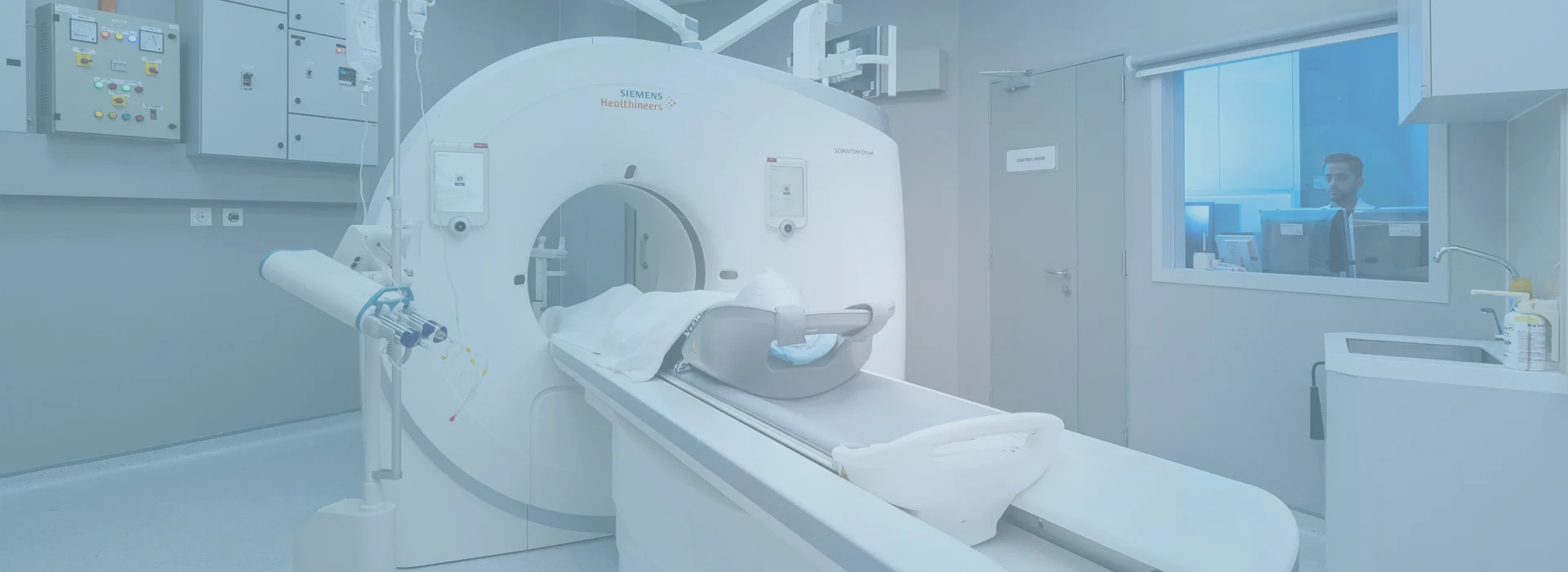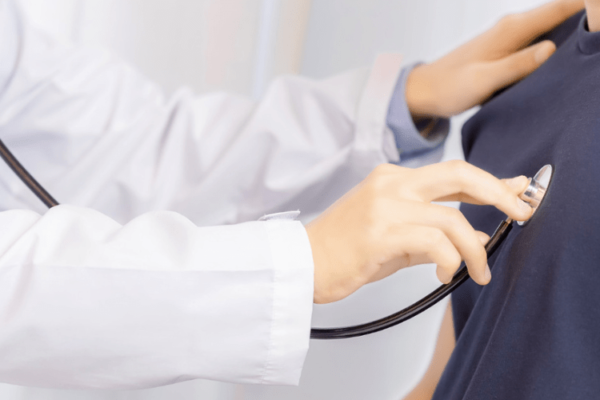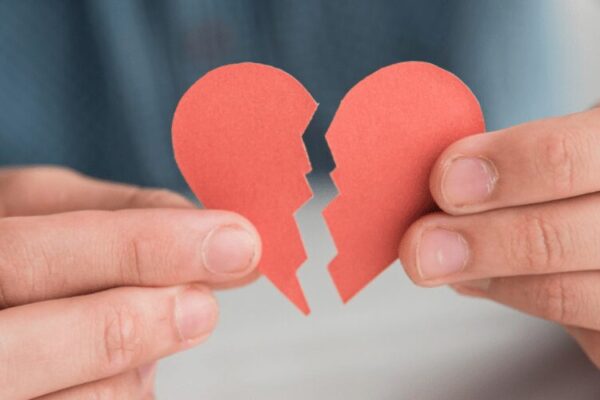
07 Oct Breast Cancer: What You Need to Know
Breast Cancer: What You Need to Know
By Island Hospital | May 3, 2024 12:00:00 PM
Do you know that breast cancer is the most common cancer globally?
In 2020, there were 2.26 million new cases worldwide, and tragically, over 685,000 lives were lost to this disease.
Given the significant impact of this disease, gaining a deeper understanding of breast cancer will help prevent and manage it effectively.
In this article, we’ll explore the types, stages, symptoms, risk factors, diagnosis, treatments, ways to live with, and measures to prevent breast cancer.
What is Breast Cancer?
Breast cancer happens in the breasts – the two soft, protruding organs on the upper front of a human’s body.
This disease happens due to the uncontrolled growth of abnormal breast cells.
Types of Breast Cancer
There are several types of breast cancer, which include:
1. Non-Invasive Breast Cancer
Non-invasive breast cancer, also known as “pre-cancers”, refers to abnormal cell changes in the breasts that have not yet developed into true cancer.
However, these changes serve as a marker for an increased risk of diagnosing invasive breast cancer in the future.
Here are the 2 main types of non-invasive breast cancer:
a) Ductal Carcinoma In Situ (DCIS)
This is the most common type of non-invasive breast cancer. It occurs when abnormal cells are formed in the milk ducts but have not spread into the surrounding breast tissue.
While DCIS often presents without any symptoms, some patients may experience a breast lump or bloody nipple discharge.
b) Lobular Carcinoma In Situ (LCIS)
LCIS involves abnormal cell changes in the lobules of your breast.
Similar to DCIS, LCIS typically has no symptoms and is usually only detected incidentally during a breast biopsy for other reasons.
2. Invasive Breast Cancer
Breast cancer cells that spread from the milk ducts or lobules of the breast into surrounding breast tissues are referred to as invasive or infiltrating breast cancer.
As time passes, these invasive breast cancers may spread to the lymph nodes and other body parts, such as organs, tissues, or bones.
There are 2 main types of invasive breast cancer:
a) Invasive Ductal Carcinoma (IDC)
Accounting for 85% to 90% of breast cancer cases, IDC is the most common type of invasive breast cancer that originates from the milk ducts of your breasts.
b) Invasive Lobular Carcinoma (ILC)
ILC is an invasive breast cancer that originates from the lobules of your breast.
3. Hormonal Breast Cancer
As indicated by its name, these cancers are fueled by female hormones, such as estrogen and progesterone.
Here are the 2 main types of hormonal breast cancer:
a) HER2-Positive Breast Cancer
In this type, your breast tissue has extra HER2 receptors, causing your breast cells to multiply too quickly and leading to the formation of cancerous tumors in your breast.
b) Triple-Negative Breast Cancer
This disease is characterized by the absence of estrogen and progesterone receptors, as well as the HER2 protein.
4. Other Rare Breast Cancer Types
a) Inflammatory Breast Cancer (IBC)
This is a rare form of breast cancer that causes symptoms similar to an infection. Your breast may feel warm, swollen, and red, and your skin may be dimpled, leathery, or ridged.
b) Phyllodes Tumors of The Breast
This disease typically starts as non-cancerous tumors but can sometimes develop into cancerous ones over time.
The tumor of this disease tends to grow fast but rarely spreads outside the breast.
c) Paget’s Disease
This is a form of breast cancer where the cancerous cells are found in the skin of your nipple and areola, causing it to be scaly, red, irritated, and itchy.
It is often accompanied by ductal carcinoma.
Stages of Breast Cancer
Breast cancer staging is a crucial step in deciding the appropriate treatment plan and prognosis for patients.
There are 2 main staging systems for breast cancer:
The TNM System
This system is utilized for staging various solid tumor cancers, including breast cancer.
It provides a comprehensive evaluation of the cancer’s extent by assessing the primary tumor size (T), the lymph node involvement (N), and the presence of distant metastasis (M).
- T is graded from 1 to 4, with higher grades indicating larger tumor size.
- N score ranges from 0 to 3, with higher grades denoting that breast cancer has spread to the lymph nodes and many of them have been affected.
- M is graded from 0 to 1, with 1 indicating that the breast cancer has spread to other parts of the body.
The Number Staging System
Based on the spread extent of breast cancer, the Number Staging System is utilized to categorize breast cancer into 4 main stages:
- Stage 0: The cancer cells haven’t spread from the breast ducts to other parts of the breast.
- Stage 1: The cancer cells are present in the breast tissue.
- Stage 2: The cancer cells have formed tumors and may have spread from the breast to nearby lymph nodes.
- Stage 3: The cancer cells have spread to nearby lymph nodes, the skin of the breast, or the chest wall. This stage is also known as locally advanced breast cancer.
- Stage 4: The cancer cells have spread to other parts of the body, such as the bones, lungs, liver, or brain. This stage is also known as metastatic breast cancer.
In summary, the TNM system generally offers a more comprehensive evaluation, while the number staging system provides a more straightforward classification based on the cancer’s spread.
Symptoms of Breast Cancer
Breast cancer symptoms can vary widely between individuals. While some may exhibit early warning signs, others may show no symptoms.
Common early indicators for breast cancer include:
- Having new lumps at your breast or armpit.
- Irritation or dimpling of your breast skin.
- Your breast is thickening or swelling.
- Unusual change in the breast size or shape.
- Abnormal pain in any area of the breast.
- Red or flaky skin around your nipple.
- Clear or bloody fluid discharged from your nipple, other than breast milk.
If you experience any concerning symptoms, you must see your doctor promptly for evaluation. However, note that these signs can also occur in non-cancerous conditions.
Risk Factors of Breast Cancer
Given the prevalence of breast cancer as the most common cancer globally, understanding the risk factors that increase your likelihood of developing this disease is vital.
1. Gender
The risk for women to be diagnosed with breast cancer is 100 times higher than that of men.
2. Age
Women over the age of 50 have an 8-10 times higher likelihood of developing breast cancer compared to younger women.
However, it’s important to note that in recent years, the age profile of breast cancer patients has begun to skew younger.
3. Personal History of Breast Cancer
Women with a personal history of both non-invasive and invasive breast cancer face an elevated risk of developing the disease again.
4. Family History of Breast Cancer
A woman’s risk of diagnosing breast cancer can significantly increase by 2.5 to 3.5 times if she has a first-degree relative (mother, sister, or daughter) with the disease.
5. Inherited Genetic Mutations
Inheriting certain genetic mutations, particularly in the BRCA1 and BRCA2 genes, can significantly elevate the risk of breast cancer.
6. Reproductive Factors
Late onset of menopause, early onset of menstruation, older age at first pregnancy, and never having given birth can contribute to increased estrogen exposure and, consequently, breast cancer risk.
7. Radiation Exposure
Exposure to radiation therapy in the chest area, particularly during puberty, can raise the risk of developing breast cancer later in life.
8. Breast Density
Women with dense breast tissue, as observed on a mammogram, are more prone to develop breast cancer.
Breast density can be influenced by factors such as age, pregnancy history, and hormone use.
9. Lifestyle Factor
Obesity, particularly in postmenopausal women, excessive alcohol consumption, and smoking have also been associated with a higher risk of breast cancer.
Diagnosis of Breast Cancer
To diagnose breast cancers accurately, health providers will perform a comprehensive evaluation using a variety of tests.
Imaging Tests
- Mammogram: Check for the abnormalities or symptoms of breast cancer in your breast.
- Breast Ultrasound: Evaluate superficial lumps in your breast through sound waves.
- Breast MRI test (Magnetic Resonance Imaging): Produce detailed images of your breast structure and tumor through magnetic and radio waves.
- CT scan (Computed Tomography): Produce detailed 3-D images of your breast structure and tumor through X-rays.
PET scan (Positron Emission Tomography): Non-invasive visualization of biological processes in the breast tumors
Biopsy
This procedure removes a small sample of breast tissue to identify any signs of cancer or other abnormalities in the breast cells.
Treatment of Breast Cancer
The treatment of breast cancer depends on various factors, including the size, type, and stage of the tumor, as well as the patient’s age, overall health, and personal preferences.
The typical treatment approaches for breast cancer include:
No. | Treatment | Explanation |
|---|---|---|
1. | Surgery |
|
2. | Chemotherapy |
|
3. | Radiation Therapy | |
4. | Targeted Therapy | |
5. | Hormone Therapy | |
6. | Immunotherapy |
Given the complex and diverse nature of breast cancer, patients often require a combination of different treatments to achieve the best possible outcomes.
Living With Breast Cancer
Receiving a breast cancer diagnosis can be life-changing. In this section, we explore the key aspects of navigating the journey of living with breast cancer.
Practice a Healthy Lifestyle
Eating a balanced diet focusing on foods with high proteins, carbohydrates, healthy fats, and fruits and vegetables can alleviate treatment-related side effects and aid in recovery.
Regularly engaging in gentle exercises can help boost strength and mobility, reduce stress, and improve overall well-being.
Managing Emotional Well-being
The emotional toll of a breast cancer diagnosis and the subsequent treatment process can be overwhelming.
Joining support groups, seeking support from mental health professionals, and engaging in stress-reducing activities like meditation or counseling can be invaluable in maintaining emotional resilience and well-being.
Embracing a Holistic Approach to Healing
In addition to conventional medical treatment, many individuals find that incorporating complementary and integrative therapies, such as yoga, meditation, or art therapy, can enhance their overall well-being and quality of life.
Given the complex and diverse nature of breast cancer, patients often require a combination of different treatments to achieve the best possible outcomes.
Measures to Prevent Breast Cancer
1. Maintain a Healthy Weight
Excess body weight is the major risk factor for breast cancer, particularly in postmenopausal women.
When a person has more fat cells, their body will have a high estrogen level. Increased estrogen exposure will contribute to the development of breast cancers.
Hence, maintaining a healthy body mass index (BMI) through regular exercise and a balanced diet can reduce the risk of developing the disease.
2. Perform Breast Self Examination (BSE) Regularly
Regular breast self-examination (BSE) allows us to detect any changes requiring medical attention on time.
For women who still menstruate, you should examine your breasts’ condition at least once a month. The best time to perform BSE is about a week after the start of each period, typically between day 7 and day 10.
For those who no longer have periods, it is recommended to choose a specific date each month to conduct the examination, such as the first of the month.
Here are the steps to perform a thorough breast self-examination:
Step 1 – Stand in front of a mirror and inspect your breasts for any changes in size, shape, or appearance, such as dimpling, puckering, or nipple retraction.
Step 2 – Lie down and use the pads of your fingers to gently feel your entire breast, including the area around the nipple and up to the collarbone. Check for any lumps, thickening, or other abnormalities.
Step 3 – Carefully examine your nipples for any signs of bleeding, discharge, or other changes.
Step 4 – Feel the area under your arms for unusual lumps or swelling.
Step 5 – Repeat these steps for the other breast.
3. Limit Alcohol Consumption
Alcohol can raise estrogen levels in the human body, increasing the risk of developing the disease.
Thus, it is recommended to limit alcohol consumption to no more than 1 drink per day.
4. Breastfeed If Possible
Women who breastfeed their child for 1-2 years have a lower risk of getting breast cancer.
The exact mechanisms behind this protective effect are not fully understood yet, but it is believed to be related to hormonal and other biological changes during lactation.
5. Undergo Breast Cancer Checkup Regularly
Women should follow the recommended breast cancer screening guidelines, which typically include mammograms, clinical breast exams, and potentially other imaging tests, depending on individual risk factors.
For women aged 40 and above, it is recommended to undergo breast cancer checkups annually.
For women between the ages of 20 to 40 who are considered to be at a higher risk of developing breast cancer, they should get a checkup every one to three years.
Adopting these strategies will significantly reduce your risk of developing this devastating disease.
Island Hospital: Your Trusted Partner for Breast Cancer Solutions
At Island Hospital, our renowned oncologists and dedicated support staff are always here to guide you throughout your breast cancer journey.
From precise diagnostic testing to cutting-edge treatments and compassionate support services, our Clinical Oncology and Haemato-Oncology Center is equipped to help you fight back against breast cancer.
Don’t let breast cancer control your life any longer – contact us today to learn about our world-class treatment options and our philosophy of providing comforting, patient-centric care.
Your path to healing starts right here.
FAQ
What are the side effects of breast cancer treatment?
Common side effects of breast cancer treatment include fatigue, nausea, weight gain or loss, arm swelling, mouth sores, hair loss, skin or nail changes, difficulty getting pregnant, insomnia, and depression.
Notably, the side effects of most breast cancer treatments will disappear when the treatment stops, while some may show up later.
How often should I get checked for breast cancer?
For women aged 40 and above, it is recommended to undergo breast cancer checkups annually.
For women between the ages of 20 to 40 who are considered to be at a higher risk of developing breast cancer, they should get a checkup every one to three years.
Can you live long with breast cancer?
Based on the information updated on January 2024, the 5-year relative survival rate of breast cancer is as follows:
- Localized breast cancer: 99%
- Regional breast cancer: 86%
- Distant breast cancer: 31%.
Hence, early detection before the cancer spreads is crucial for the best outcomes.
What are the warning signs of breast cancer?
The most common symptom of breast cancer is having a new lump or mass at your breast or armpit.
For detailed information on other common symptoms of breast cancer, please refer to this section.
How to avoid breast cancer?
While there is no guaranteed way to prevent bladder cancer, certain lifestyle changes can reduce the risk.
You can maintain a healthy weight, quit smoking, perform breast self-examination regularly, limit alcohol consumption, breastfeed if possible, and undergo regular screening.
Refer here for more information.
How would I know if my breasts feel normal?
There is no typical breast.
What is normal for you may not be normal for other women. It is common for women to say that their breasts feel lumpy or uneven.
Other factors that affect the way your breasts look and feel can be your period, childbirth, losing or gaining weight, and taking certain medications. Age is also a factor for breasts change in shape and size.
I felt a lump in my breast – what do they mean?
While many conditions can cause lumps in the breast, cancer may or may not be one of the reasons. Sometimes, breast lumps are caused by other medical conditions.
The two most common causes of breast lumps are fibrocystic breast condition and cysts. Fibrocystic condition is a non-cancerous change that can make your breast lumpy, tender, and sore, while cysts are small fluid-filled sacs that develop in the breast.
Can men get breast cancer?
Yes. While breast cancer is far more common in women, men can still develop this disease, though their risk is approximately 100 times lower than that of women.
Hence, men need to watch out for breast cancer symptoms, too.







